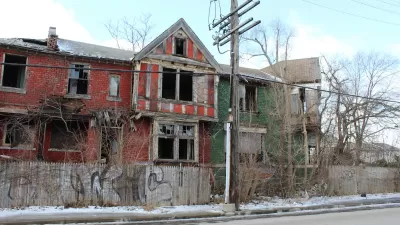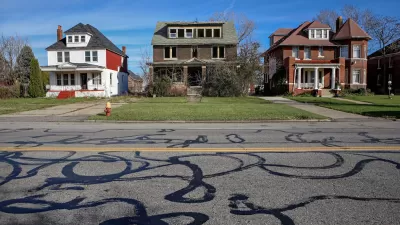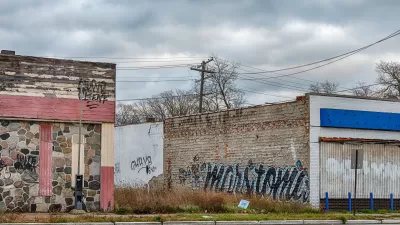Curtis Johnson details an unexpected trend in downtown Motor City, where a spike in housing demand may hint at the comeback promised in Chrysler's famed Superbowl ad.
In a city that has come to symbolize industrial collapse and suburban flight, a housing shortage is just about the last thing you'd expect to see. But a housing shortage is precisely what young professionals are finding as they flock into downtown and Midtown Detroit.
More precisely, it's apartments that are being snapped up left and right, leading to occupancy rates as high as 96 percent. "So it doesn't matter much that the median housing price in Detroit is parked at around $10,000," Johnson explains, "or that, as the Detroit Free Press recently reported, most sales of good houses in stable areas are for less than $75,000. Young people moving to Detroit want to rent."
As businesses – particularly those in knowledge-based industries – have begun to move back downtown, demand for rentals has skyrocketed. Johnson points out that "sustainable demand for good rentals is not that hard to imagine. In recent years employers such as Quicken Loans, Blue Cross, and Compuware have moved close to 9000 workers from outside the city to downtown. Cultural and arts institutions such as the Detroit Institute of Arts and the College for Creative Studies line the shoulders of Midtown's Woodward Avenue. A thriving and large urban university, Wayne State, anchors the heart of the corridor. Vanguard Health System is pouring a billion dollars into the Detroit Medical Center."
Supply, on the other hand, has failed to keep up with demand on account of banks' exceeding hesitance to finance construction for new housing. In the wake of the collapse of the housing market, new loan requirements have left developers in what Olga Stella of the Detroit Economic Growth Corporation calls "a slump of low confidence." According to Stella, even in spite of strong indicators of recovery, building the rental capacity that Detroit needs is "slow, hard work, one project at a time."
FULL STORY: Housing Shortages in Detroit?

Alabama: Trump Terminates Settlements for Black Communities Harmed By Raw Sewage
Trump deemed the landmark civil rights agreement “illegal DEI and environmental justice policy.”

Study: Maui’s Plan to Convert Vacation Rentals to Long-Term Housing Could Cause Nearly $1 Billion Economic Loss
The plan would reduce visitor accommodation by 25% resulting in 1,900 jobs lost.

Planetizen Federal Action Tracker
A weekly monitor of how Trump’s orders and actions are impacting planners and planning in America.

This Toronto Suburb Has More Bus Riders Than Columbus, Ohio
Brampton, Ontario used gradual improvements in service to prove that if you build it, they will ride.

Paris Bike Boom Leads to Steep Drop in Air Pollution
The French city’s air quality has improved dramatically in the past 20 years, coinciding with a growth in cycling.

Why Housing Costs More to Build in California Than in Texas
Hard costs like labor and materials combined with ‘soft’ costs such as permitting make building in the San Francisco Bay Area almost three times as costly as in Texas cities.
Urban Design for Planners 1: Software Tools
This six-course series explores essential urban design concepts using open source software and equips planners with the tools they need to participate fully in the urban design process.
Planning for Universal Design
Learn the tools for implementing Universal Design in planning regulations.
Smith Gee Studio
Alamo Area Metropolitan Planning Organization
City of Santa Clarita
Institute for Housing and Urban Development Studies (IHS)
City of Grandview
Harvard GSD Executive Education
Toledo-Lucas County Plan Commissions
Salt Lake City
NYU Wagner Graduate School of Public Service





























